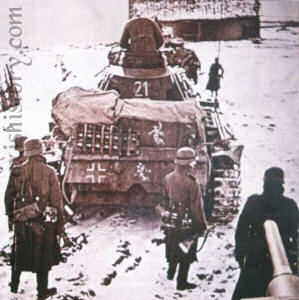Sept 17th 1944. 20000 Paras from the82nd,101st and 1st British Airborne dropped behind the German lines in Holland today. Their objective was the bridges all the way to the Rhine. They would hold them until relieved by British ground forces from 30xxx. The plan was Montgomery’s and it was simple, but audacious. Resistance was expected to be light as the Germans had been retreating for weeks. Allied morale and expectations were high. It was expected the Paras would be relieved in 48 hours. Once the final bridge was relieved, the Ruhr and Germany proper would be theirs for the taking and the war over by Christmas.
Over 4000 planes escorted and transported the Paras and pulled gliders in the two air armadas. THe Germans were able to put just 75 planes in the air, insufficient to cause � much damage. All told 68 planes and 71 gliders were lost or had to turn back.Importantly, 35 of the gliders were from 1st Airborne and included 2 17lb AT guns.
The 101’s objective was Eindhoven and the bridges nearest the front lines.All went well,except at Son, where the bridge was blown. The 82nd(next up the line)also did well, but 2 of yhe 3 bridge over the Waal were blown and there was now no direct route from Grave to NIjmegen. The Germans , with FM Model in command, reacted well to the landings, realising Nijmegen was the key. Unknown, or ignored by the Allies more appropriately, the cadre of IISS(Bittrich) was resting and refitting in the area. This veteran formation was just what was needed on which to build a defence. The 10thSS(Harmel) was ordered to Nijmegen and the 9th(Harzer) West of Arnhem to prevent the 1st Para reaching the bridges there. Student(of 7th Para and Crete fame) was ordered to hold around Eindhoven. As it stood, the German defence was based on small mixed arms ad hoc units, learnt on the Eastern Front and proven very effective at holding until real reinforcements arrived. Hitler realised the landings’ importance and assured Model he would have all available resources.
The1 st Airborne was dropped furthest, 64 miles from the front lines and 8 miles from its objectives and because of a shortage of aircraft was going in over 3 days. It was hampered thus, having to leave half its Infantry to protect the Drop Zones while only one Brigade, the 1st Para took all the day’s objectives. It was to prove too much. The 3 Battalions took 3 different routes and resistance was building all the time. Only Johhnie Frost’s 2nd Battalion made it to the bridge and he was only able to hold the Northern end. He had some mortars and 2 6lb AT guns. He was soon joined by 1st Para HQ, minus its commander, Lathbury.( He and the Division commander were later trapped and had to hide in an attic, therefore missing out on the most important moments of the landings: the start.) At least now Frost had radio communication with Division and some idea of when help was coming to him. � Â
Meanwhile, the ground forces, led by the Guard’s DIvision was finding movement to the bridges very hard going. EvenEindhoven was not taken on the 1st day, but it had been expected to fall within 3 hours. THere were still many miles and many bridges to cross, not all secured.








